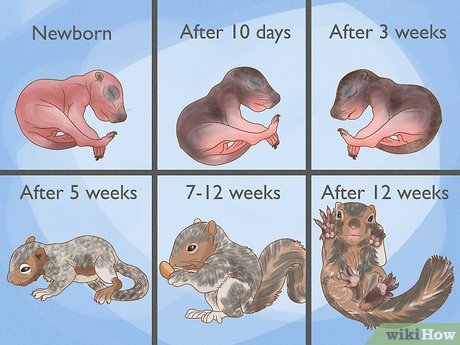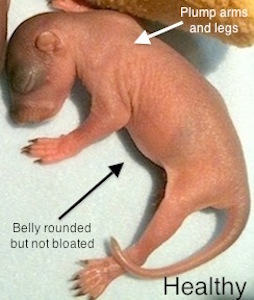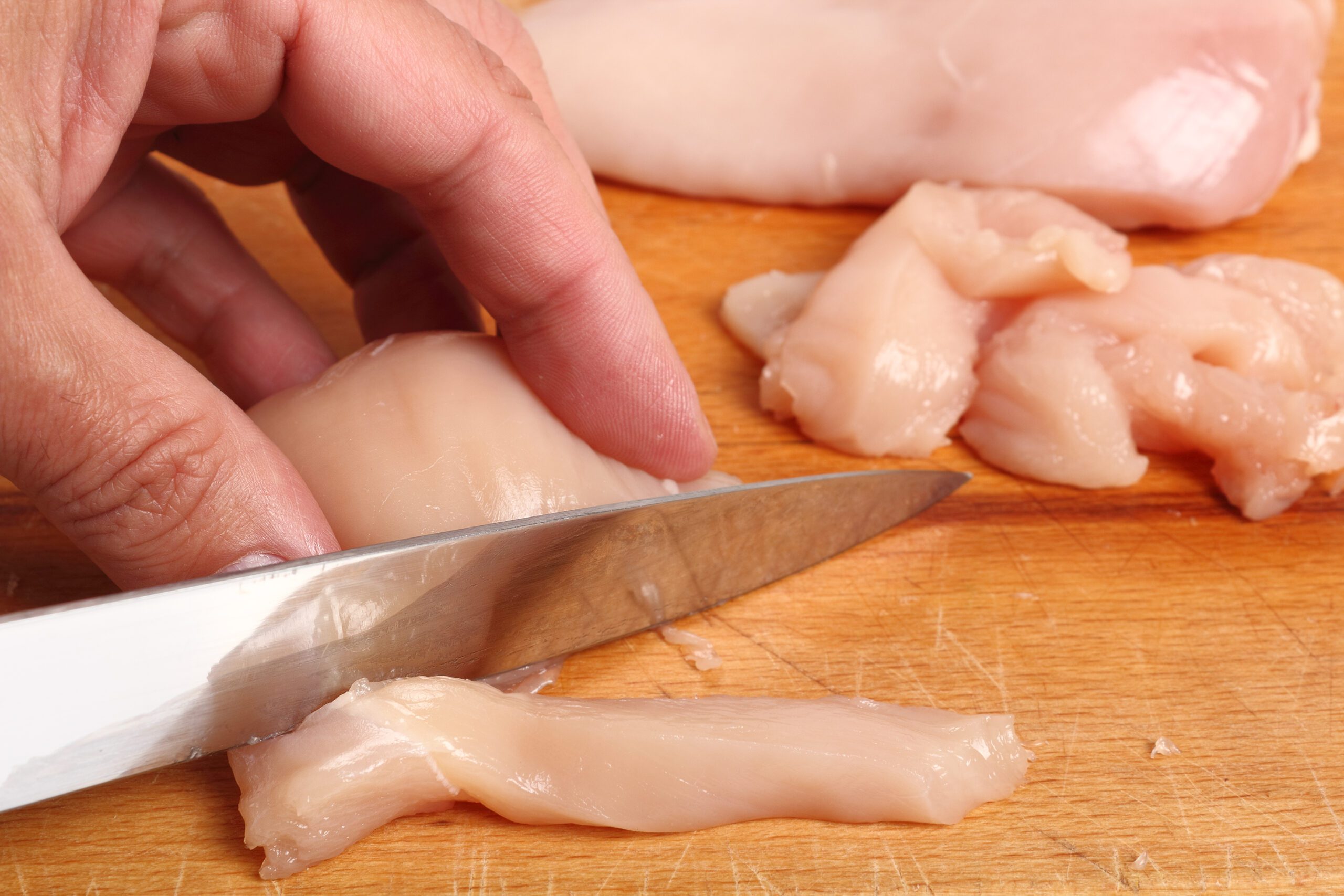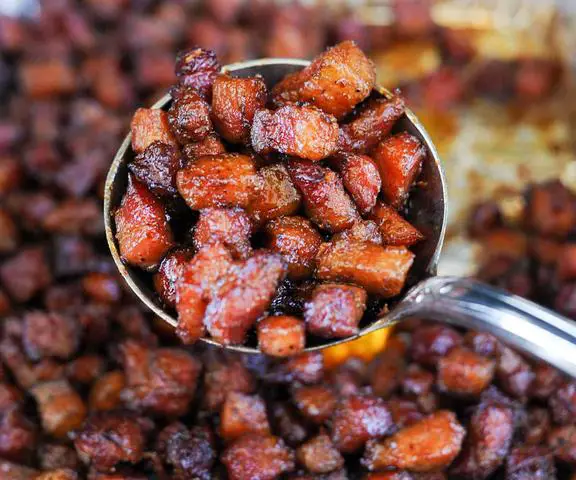
To tell the age of a baby squirrel, examine its fur and physical development. Newborns are hairless, while older babies have fur and open eyes.
Baby squirrels grow rapidly in their first few weeks. By observing specific characteristics, you can estimate their age. Newborns are pink and hairless, weighing about 15 grams. At two weeks, they start to develop fur on their backs. By three weeks, fur covers their bodies, but their eyes remain closed.
Around four weeks, their eyes begin to open, and they look more like miniature squirrels. At six weeks, they are more active and start to explore their surroundings. Recognizing these stages helps in providing appropriate care and understanding their needs.
Identifying Newborn Squirrels
Newborn squirrels are tiny and delicate. Knowing their age helps in caring for them. Identifying a newborn squirrel involves looking at their physical characteristics and observing their behavior.
Physical Characteristics
Newborn squirrels have distinctive physical traits. They are usually small, measuring about 3 inches. They have no fur, revealing their pinkish skin. Their eyes and ears are closed, and their tails are not yet bushy.
| Characteristic | Description |
|---|---|
| Size | About 3 inches |
| Fur | No fur, pinkish skin |
| Eyes | Closed |
| Ears | Closed |
| Tail | Not bushy |
Behavioral Traits
Observing the behavior of newborn squirrels is also essential. They are usually quiet, making soft squeaks. They need their mother’s warmth and milk. They sleep most of the time, curling up for warmth.
- Quiet, with soft squeaks
- Need their mother’s warmth
- Sleep most of the time
- Curl up for warmth
Recognizing these traits helps in identifying and caring for newborn squirrels effectively.
Determining Age By Fur Development
Determining the age of a baby squirrel can be tricky. One reliable way is by observing fur development. As baby squirrels grow, their fur changes. This guide will help you understand these changes.
Stages Of Fur Growth
Baby squirrels go through different stages of fur growth. Here is a breakdown:
- Newborns: No fur at all. They look pink and wrinkled.
- 1-2 Weeks: Light fuzz starts to appear. It is very thin.
- 3-4 Weeks: Fur covers the body. It is still short and sparse.
- 5-6 Weeks: Fur becomes thicker and longer. The tail starts to fluff out.
- 7-8 Weeks: Fur is fully developed. The baby squirrel looks like a mini adult.
Color And Texture
The color and texture of a baby squirrel’s fur can also help determine its age:
| Age | Color | Texture |
|---|---|---|
| Newborn | Pink skin | No fur |
| 1-2 Weeks | Light gray | Fuzzy, thin |
| 3-4 Weeks | Gray | Short, sparse |
| 5-6 Weeks | Gray with white | Thicker, longer |
| 7-8 Weeks | Gray or brown | Full, fluffy |
By observing these stages, you can estimate the baby squirrel’s age. It is important to note these changes occur gradually. Patience and careful observation are key.
Recognizing Eye Development
Determining the age of a baby squirrel can be tricky. One of the most reliable indicators is their eye development. By observing their eyes, you can estimate their age accurately.
Closed Eyes
Baby squirrels are born with their eyes closed. They remain closed for the first few weeks. If the eyes are tightly shut, the baby is likely less than two weeks old.
Look closely at the eyelids. Newborn squirrels have thin, wrinkled lids. Their skin is usually pink and hairless. This stage is critical for their initial growth.
Opening Phase
At about two to three weeks, the eyes start to open. This phase marks a significant development milestone. The eyes may open slowly, beginning with small slits.
During this time, the eyelids appear less wrinkled. They begin to gain more fur and their skin darkens. By the end of the fourth week, their eyes should be fully open.
| Age Range | Eye Condition |
|---|---|
| 0-2 weeks | Eyes closed |
| 2-3 weeks | Eyes starting to open |
| 4 weeks | Eyes fully open |
Understanding eye development helps in caring for baby squirrels. It also ensures you provide the appropriate care at each stage of their growth.
Monitoring Mobility Milestones
Understanding a baby squirrel’s age can be challenging. Observing their mobility milestones can help. These milestones include crawling and climbing.
Crawling
Baby squirrels start crawling at about three weeks old. At this stage, their movements are slow and unsteady. They use their front legs more than their back legs. You might see them dragging their hind legs. This crawling phase is crucial for muscle development.
At four weeks old, baby squirrels gain better control. Their movements become more coordinated. They start using all four legs equally. This marks an essential phase in their physical development.
Climbing
At five to six weeks old, baby squirrels begin to climb. Initially, their climbing attempts are clumsy. They cling to tree trunks or cage walls. At this stage, their claws and muscles are developing.
By eight weeks, baby squirrels are more confident climbers. They can navigate small branches and obstacles. This climbing ability is a significant milestone. It indicates their growing strength and agility.
Here’s a simple table to summarize:
| Age (Weeks) | Milestone |
|---|---|
| 3 | Starts crawling, uses front legs more |
| 4 | Crawls with all four legs |
| 5-6 | Begins climbing, clings to surfaces |
| 8 | Confident climber, navigates small branches |
Examining Ear Development
Determining the age of a baby squirrel involves several factors. One key aspect is examining ear development. The ears of baby squirrels provide crucial clues about their age. Let’s explore the stages of ear development in baby squirrels.
Ear Folding
In the first few weeks, baby squirrels have folded ears. The ears stay flat against their heads. This stage indicates the squirrel is very young. Typically, this ear folding lasts up to three weeks.
| Age | Ear Development |
|---|---|
| 0-3 weeks | Folded ears |
During this time, the baby squirrel’s hearing is not fully developed. They rely on their mother for protection and warmth.
Full Erection
After three weeks, the ears start to stand up. By the end of the fourth week, the ears are fully erect. This stage indicates the squirrel is growing and developing rapidly.
- Week 4: Ears begin to stand up.
- Week 5: Ears fully erect.
A baby squirrel with fully erect ears is more aware of its surroundings. They start to respond to sounds around them.
Understanding ear development helps in determining the age of baby squirrels accurately.

Credit: www.reddit.com
Observing Feeding Behaviors
Observing the feeding behaviors of a baby squirrel can provide significant clues about its age. Baby squirrels exhibit distinct behaviors as they grow, especially in how they feed. Let’s explore these behaviors.
Nursing
Newborn squirrels rely on their mother’s milk. Nursing is their primary food source. They nurse frequently, almost every two hours. If you see a baby squirrel nursing, it’s likely less than 5 weeks old.
At this stage, they have closed eyes and ears. Their skin appears pink and hairless. As they grow, fine hair starts to cover their bodies. Note the nursing pattern and physical traits to estimate age.
Solid Food Intake
Older baby squirrels start eating solid food. This usually begins around 6 weeks old. Solid food intake includes small nuts, fruits, and vegetables. They might still nurse occasionally.
At this stage, their eyes are open and fur is more developed. They become more active and curious. You may notice them chewing on various objects. This indicates they are ready for solid food.
| Age | Feeding Behavior | Physical Traits |
|---|---|---|
| 0-5 weeks | Nursing frequently | Closed eyes, pink skin, hairless |
| 6+ weeks | Starting solid food | Open eyes, developed fur, active |
By observing these feeding behaviors and physical traits, you can better understand the age of a baby squirrel. Always handle baby squirrels with care and consult a wildlife expert if unsure.
Tracking Weight And Size
Understanding the weight and size of a baby squirrel helps determine its age. These factors offer clear indicators of growth. Let’s explore how to track these attributes accurately.
Average Weight
Baby squirrels have distinct weight milestones. Knowing these helps in age estimation.
- Newborns: Weigh around 15 grams.
- 2 Weeks Old: Weigh between 25 to 30 grams.
- 4 Weeks Old: Weigh between 50 to 60 grams.
- 6 Weeks Old: Weigh between 80 to 100 grams.
- 8 Weeks Old: Weigh around 150 grams.
Growth Patterns
Baby squirrels grow quickly. Their size changes noticeably over weeks.
| Age (Weeks) | Weight (grams) | Size (inches) |
|---|---|---|
| Newborn | 15 | 3 |
| 2 Weeks | 25-30 | 4-5 |
| 4 Weeks | 50-60 | 5-6 |
| 6 Weeks | 80-100 | 7-8 |
| 8 Weeks | 150 | 9-10 |
Regular tracking ensures accurate age estimation. Use a small scale for weighing. Measure length from nose to tail base.

Credit: henryspets.com
Consulting Expert Resources
Determining the age of a baby squirrel can be tricky. Expert resources can help. Consulting professionals like veterinarians and wildlife rehabilitators can provide accurate information.
Veterinarians
Veterinarians are trained to handle various animals, including squirrels. They can offer precise age estimates based on physical examination. Look for signs such as:
- Size and weight
- Fur development
- Teeth growth
Fur development is a key indicator. Newborns have no fur, while older squirrels have full coats. Teeth growth also helps in age determination. Squirrels develop teeth at specific stages.
Wildlife Rehabilitators
Wildlife rehabilitators specialize in caring for wild animals. They have experience with baby squirrels. These experts can provide age estimates based on behavior and physical traits. Key indicators include:
- Mobility
- Ear and eye development
- Feeding habits
Mobility changes with age. Very young squirrels can’t move much. Ear and eye development also signal age. Eyes open around three weeks old.
Feeding habits vary by age. Younger squirrels rely on milk. Older ones start eating solid food. Wildlife rehabilitators can offer guidance on what to feed and how much.
Consulting these experts ensures you get accurate information. Proper care is crucial for baby squirrels. Reach out to veterinarians and wildlife rehabilitators for the best advice.

Credit: www.facebook.com
Frequently Asked Questions
How Can I Tell A Baby Squirrel’s Age?
You can estimate a baby squirrel’s age by its physical features. Look for fur development, open eyes, and mobility.
What Does A 2-week-old Squirrel Look Like?
A 2-week-old squirrel has closed eyes, thin fur, and pink skin. It is tiny and helpless.
When Do Baby Squirrels Open Their Eyes?
Baby squirrels typically open their eyes around 3 to 4 weeks old. This marks a significant developmental milestone.
How To Identify A 6-week-old Squirrel?
A 6-week-old squirrel is more active, fully furred, and has open eyes. It starts exploring its surroundings.
Conclusion
Determining a baby squirrel’s age requires careful observation and specific knowledge. Understanding developmental stages helps in providing proper care. Always observe physical characteristics and behavior. With these tips, you can ensure the well-being of young squirrels. Happy squirrel watching and caring!
Learn More About Grilling
If you want to learn more about grilling, check out these other helpful resources!






